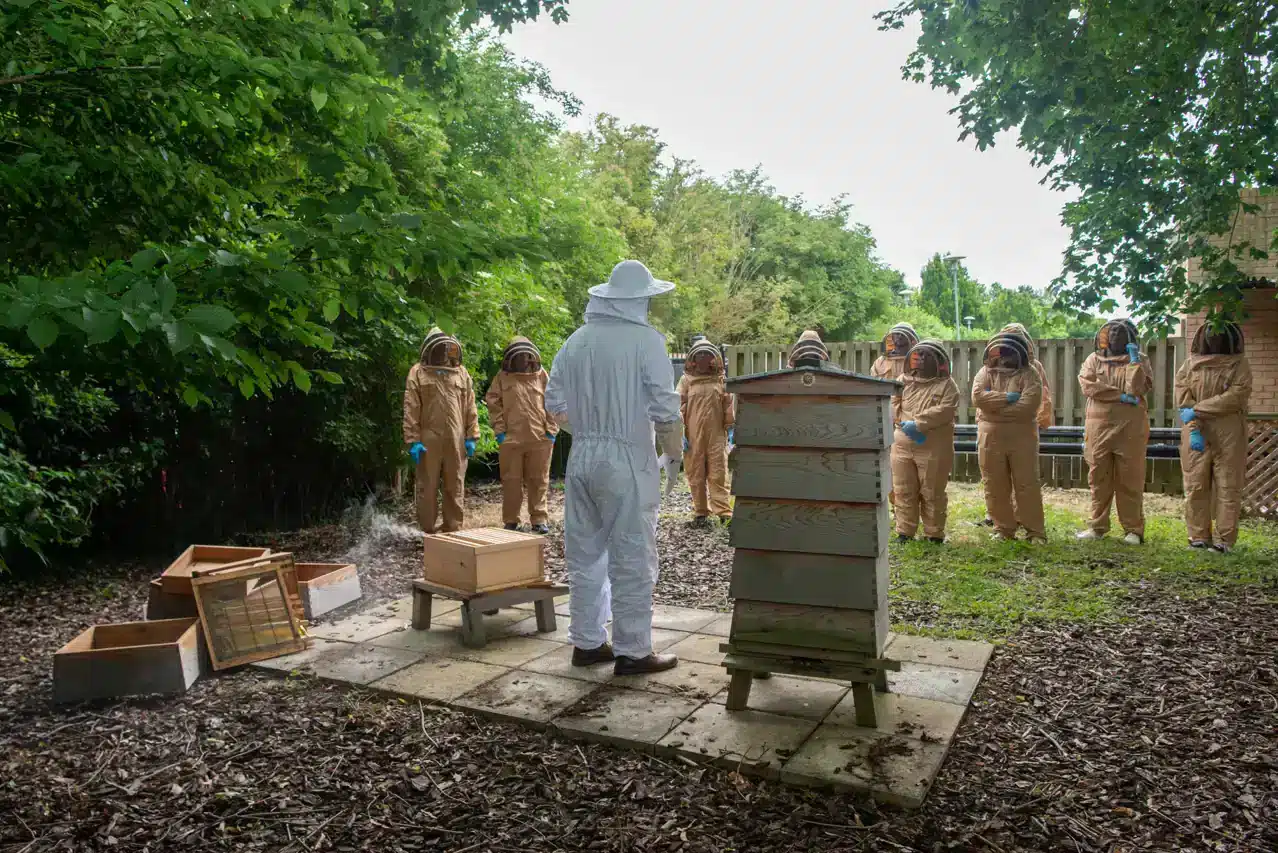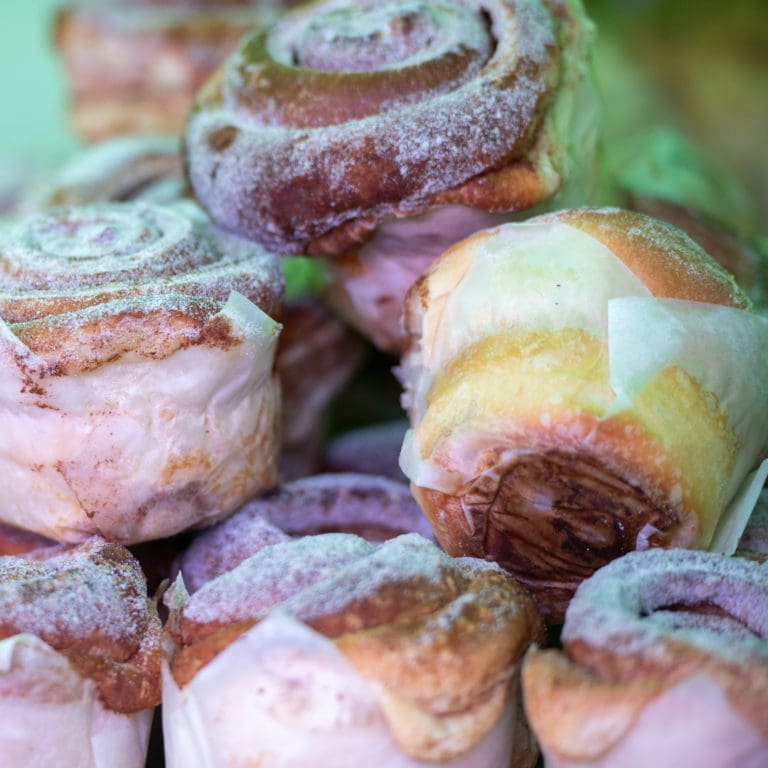
Image caption: Pyramidal orchid (Anacamptis pyramidalis)
Milton Park is known as a place for companies to cross-pollinate and grow, but did you know that it’s the perfect place for wild orchids to branch out and bloom, too?
Discover the different kinds of orchids (some of which are protected) at the Park and when to look out for them…
Bee orchid (Ophrys apifera)
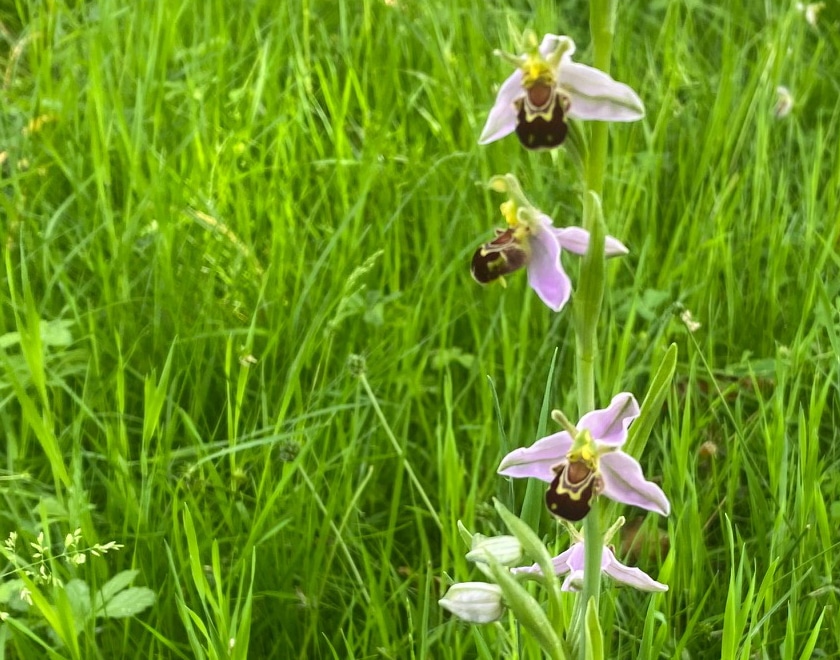
This quirky little orchid, blooming around June, can shoot up to anywhere from 3 to 25 inches tall (7-70 cm). Here at the Park, its silvery green leaves pop up between September and January, with late Winter being the prime time to spot them, thanks to their distinctive silvery green colour.
Fun fact: if you mow the area before it seeds (from summer to early autumn), you’ll likely see more flowers next year!
Despite having a reputation for being short-lived, Bee orchids can bloom annually, as long as they don’t dry out while flowering. They love barer land or lawns which have been sheep, rabbit or man mown.
Their shallow roots make them sensitive to spring droughts and they are impacted by climate change due to the shifting rain patterns, which is why they sometimes vanish for years and then reappear like magic.
Pyramidal orchid (Anacamptis pyramidalis)
The Pyramidal orchid is a real showstopper, growing up to 24 inches tall (60 cm) and flaunting blooms in shades from white to rich purple. It’s more widespread and noticeable than the Bee orchid, often appearing in big, eye-catching clusters.
Flowering usually occurs in July and its grass-like leaves start popping up from October, staying green through winter.
Unlike its more delicate cousin, the Pyramidal orchid is tough. It handles drought better, thanks to its long leaves which help it to compete with dense vegetation and is more resilient to climate change.
White Helleborine (Cephalanthera damasonium)
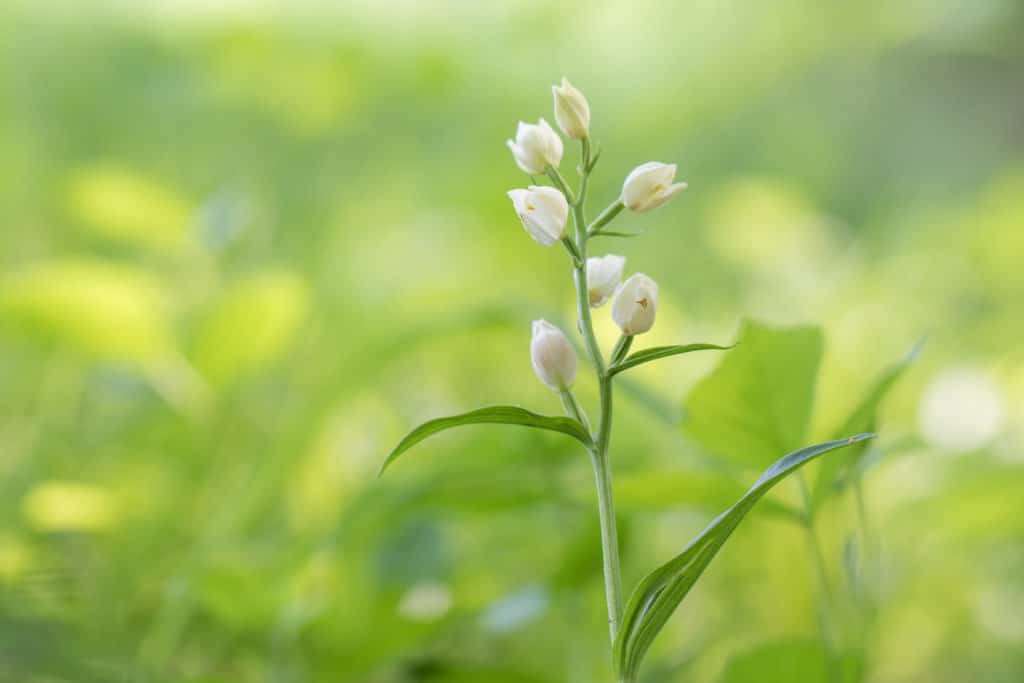
The White Helleborine is a woodland orchid with unusual flowers. The flowers are often pollinated before they open properly so fail to fully open once this has happened. Thanks to its tall stems and bright white blooms, it stands out in shady spots. Flowering in May, it can grow from 3 to 25 inches tall (7-70 cm) with up to 20 flowers per stem.
Underground, instead of tubers, it uses deep fleshy roots and sometimes stolons (a slender stem that grows horizontally along the ground) to spread. Its deep roots and long-lasting leaves stick around until the first frost. A truly innovative plant, it relies on a fungus for most of its nutrients, using it to tap into a nearby tree for carbon and nitrogen.
Lizard orchid, also known as ’Goat orchid’ (Himantoglossum hircinum)
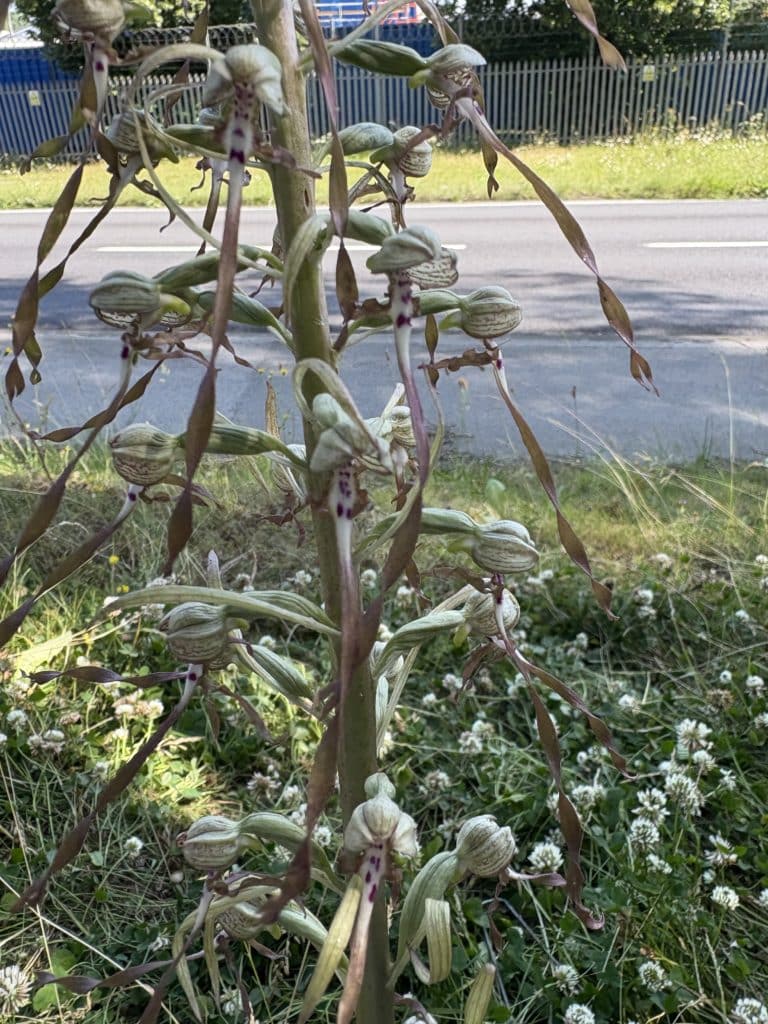
One of England’s rarest orchids, the Lizard orchid is also known as the Goat orchid; its Latin name was chosen because the flowers smell like goats! Standing tall at up to 40 inches (100 cm), it blooms in June and is protected under Schedule 8 of the Wildlife Act due to its rarity as a vulnerable species.
Its seeds likely hitched a ride on the wind from a tiny colony near the M32 motorway in Coalpit Heath, Bristol, an impressive journey for such a rare and delicate plant.
Send us a picture if you spot any of these rare and unusual plants at Milton Park this summer.

